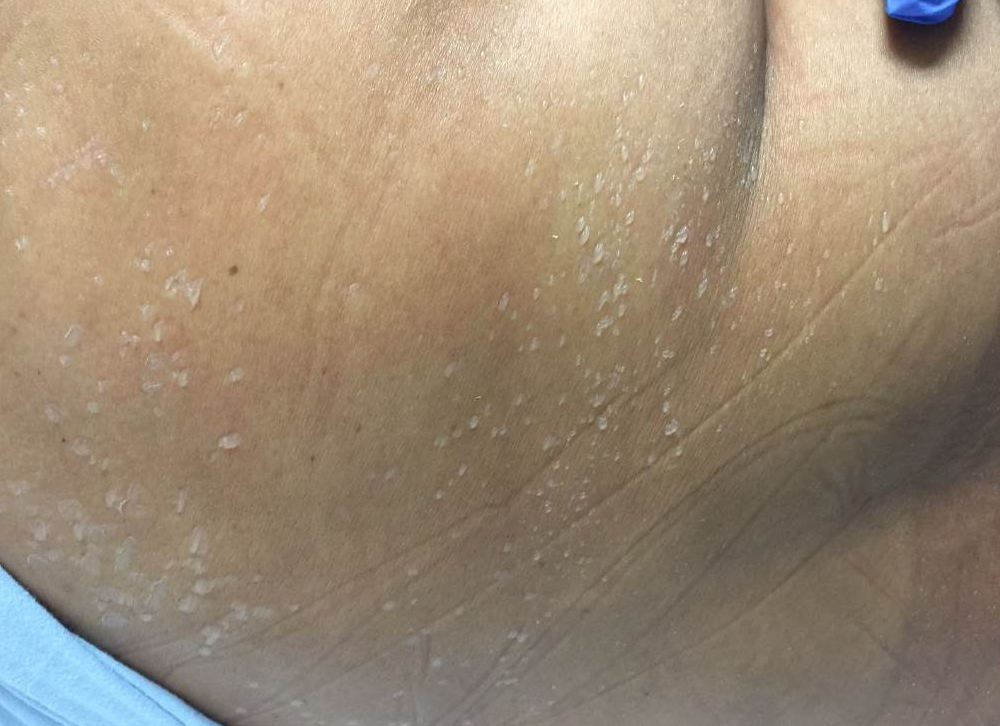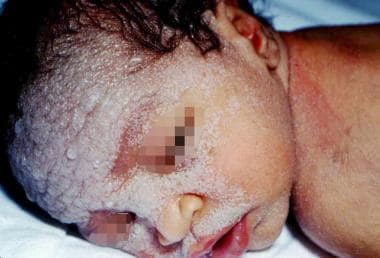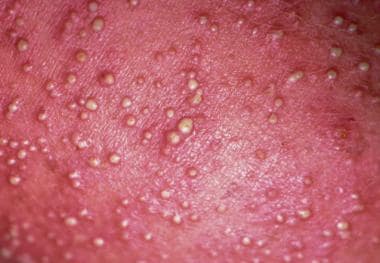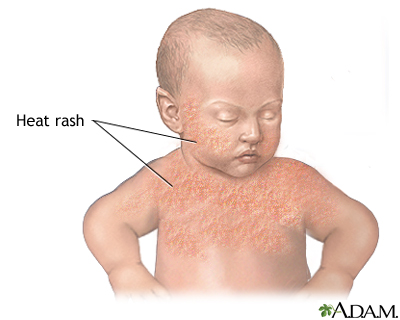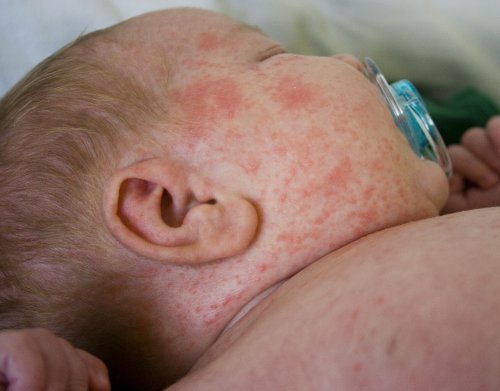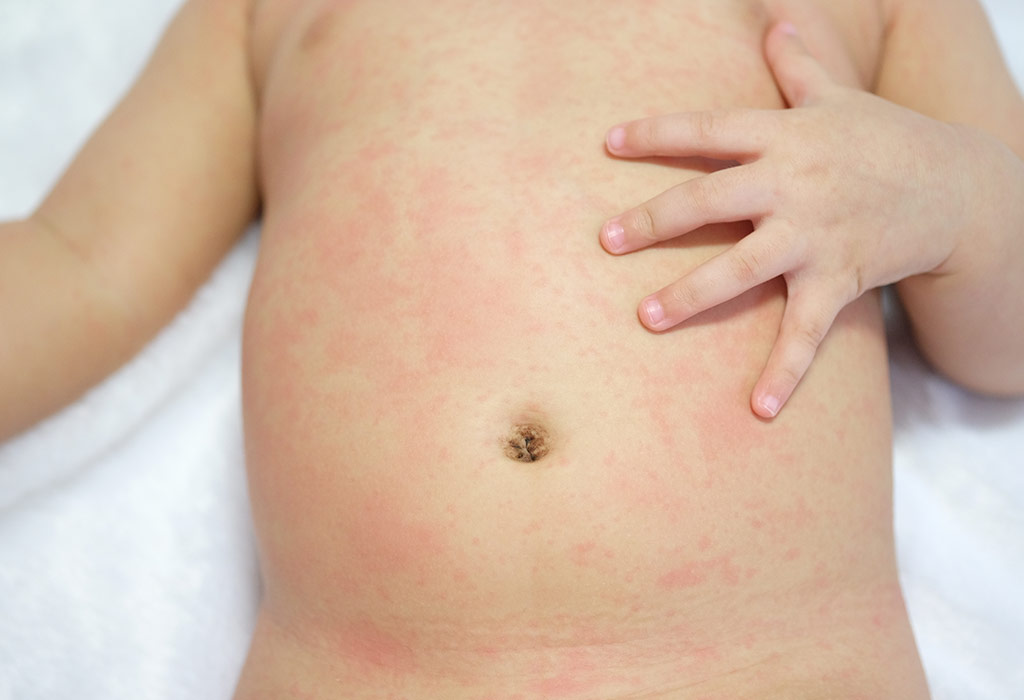Miliaria Newborn Babies


Slightly deeper occlusion results in red papules and pustules miliaria rubra or prickly heat.

Miliaria newborn babies. Give your baby a break from clothes on the play mat or let him take a naked stroll or crawl around the house. It is particularly common in newborn babies but soon clears. Red rashes may be prickly heat rash or miliaria which occurs when babies are exposed to high temperatures causing them to sweat profusely. Another common time for the rash to occur is when people travel to a warmer climate and sweat more than usual typically on going to a hot country for a holiday.
Up to 3 in 10 people who travel to a warmer climate and who sweat a lot may be affected by miliaria. Although this rash can be caused by fever heat rash is more commonly seen in infants who are dressed too warmly in the winter. However they can occur anywhere on the body. They are most often seen on the skin around the cheeks nose eyes and eyelids forehead and chest.
Miliaria rubra also known as heat rash or prickly heat is a common skin condition caused by the blockage of the sweat gland. A milium cyst is a small white bump that typically appears on the nose and cheeks. How to prevent heat rash in babies. Parents often go into panic mode when they see rashes emerge on their babys skin.
Miliaria affects up to 40 percent of infants and usually appears during the first month of life12 several clinically distinguishable subtypes exist. In this article we look at why babies get heat rash different types of rash and how a caregiver can prevent heat rash in a baby. Multiple cysts are referred to as milia. Miliaria crystallina and miliaria rubra are.
Milia is most common in newborns and may be mistaken for baby acne. Anything unexpected appearing on the skin can be unnerving to parents and may cause discomfort to the child. Also known as prickly heat or miliaria heat rash in babies occurs when excessive sweating clogs sweat glands trapping perspiration beneath the skin and resulting in telltale red bumps or blisters. Your baby shows signs of dehydration.
A dry mouth no tears with crying cracked lips. Babies are more likely to get heat rash than adults.






